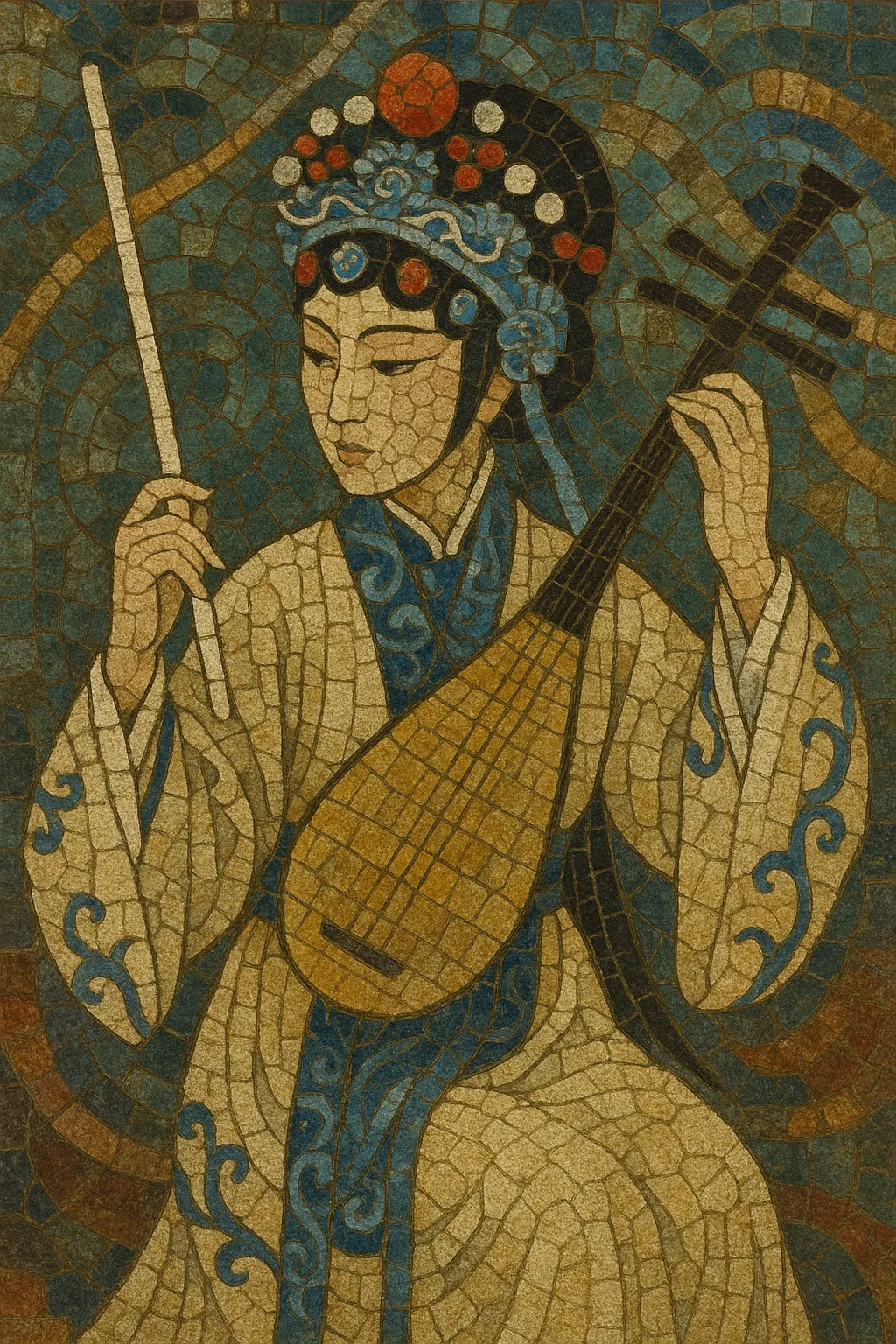Kunqu (Kun Opera) is one of the oldest surviving forms of Chinese opera, refined in the Jiangnan region around Suzhou during the Ming dynasty. It is renowned for its elegant "water-polished" vocal style, refined literati aesthetics, and graceful dance-acting.
Characterized by highly ornamented, lyrical melodies set to fixed tune-patterns (qupai), Kunqu integrates poetry, song, stylized movement, and minimal yet expressive gesture. Its core instrumental color is led by the bamboo flute (dizi), supported by silk-string and plucked instruments such as sanxian and pipa, with light percussion marking structural points rather than driving the music.
Kunqu’s repertoire, including masterpieces like The Peony Pavilion and The Peach Blossom Fan, conveys romantic, introspective, and poetic moods. It emphasizes literary elegance, vocal finesse, and choreographic subtlety over spectacle, making it a touchstone of classical Chinese stage art.
Kunqu grew from southern Chinese theatre traditions (notably the Kunshan qiang around Suzhou). Early forms blended regional songs and narrative singing with stage action, reflecting Jiangnan’s cultured, literati milieu.
In the mid-1500s, the vocalist and reformer Wei Liangfu standardized timbre, diction, and melodic practice. His "water-polished" (shui mo) technique softened articulation, emphasized legato lines, and balanced breath with subtle ornamentation. This aesthetic, supported by dizi-led ensembles and literati patronage, formed the classical Kunqu style.
Kunqu became the courtly and scholarly theatre of the Jiangnan region. Playwrights such as Tang Xianzu (The Peony Pavilion), Kong Shangren (The Peach Blossom Fan), Hong Sheng (The Palace of Eternal Life), and others wrote sophisticated chuanqi dramas ideally fitted to Kunqu’s elegant vocalism and choreographic poise.
During the Qing dynasty, livelier northern styles (e.g., bangzi and later Peking/Beijing opera) rose in popularity. Kunqu, associated with literati refinement, gradually receded from the mainstream, though it continued in elite and regional circles and profoundly shaped newer operatic forms.
Political upheavals and changing entertainment media reduced Kunqu’s presence, but post-1978 cultural reforms initiated preservation and training programs. Milestone revivals, such as the full-length staging of The Peony Pavilion in the 1990s, rekindled domestic and international interest.
In 2001, UNESCO proclaimed Kunqu a Masterpiece of the Oral and Intangible Heritage of Humanity, catalyzing institutional support. Today, troupes in Suzhou, Shanghai, Beijing, and elsewhere maintain transmission, balancing historical fidelity with thoughtfully curated modern presentations.


